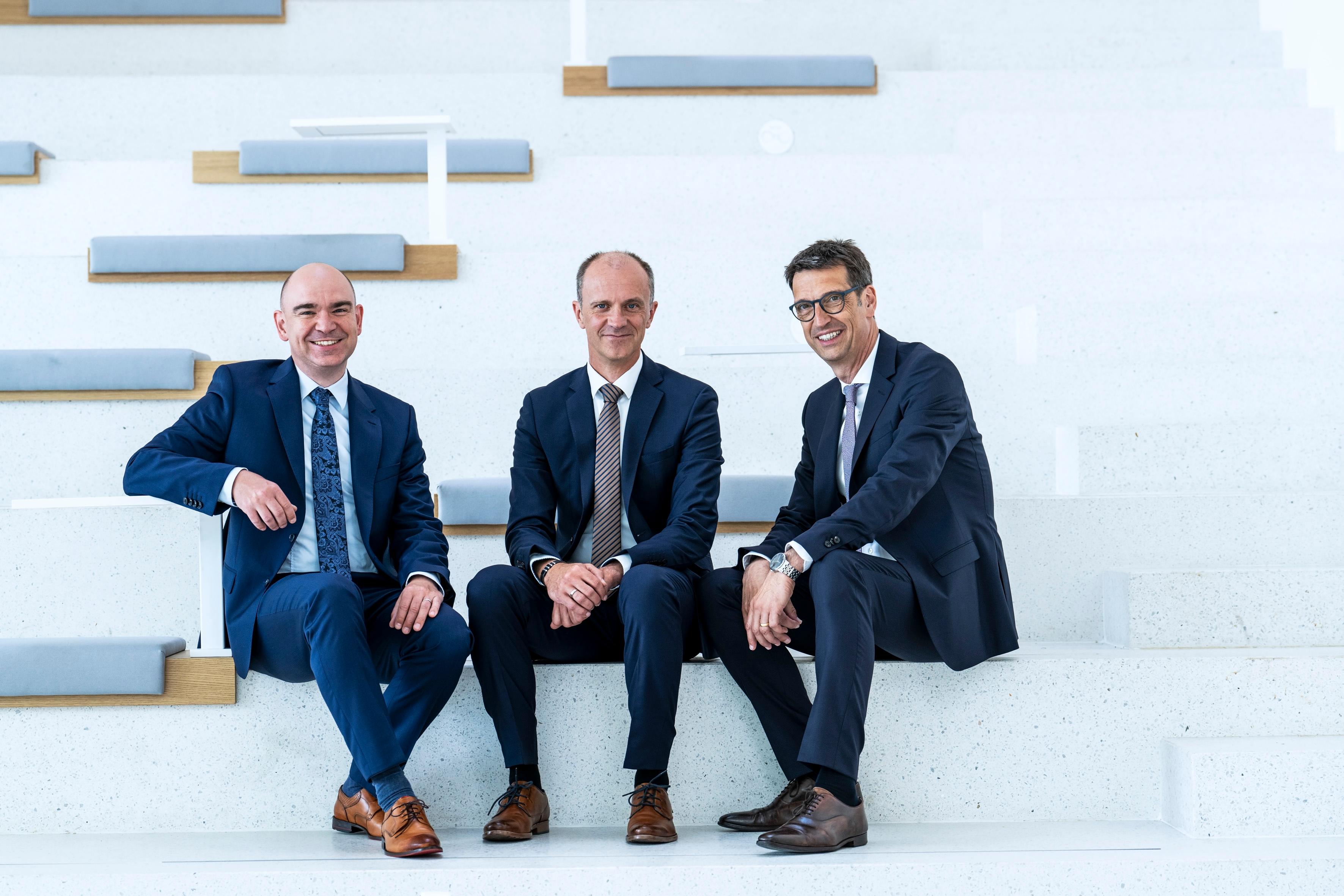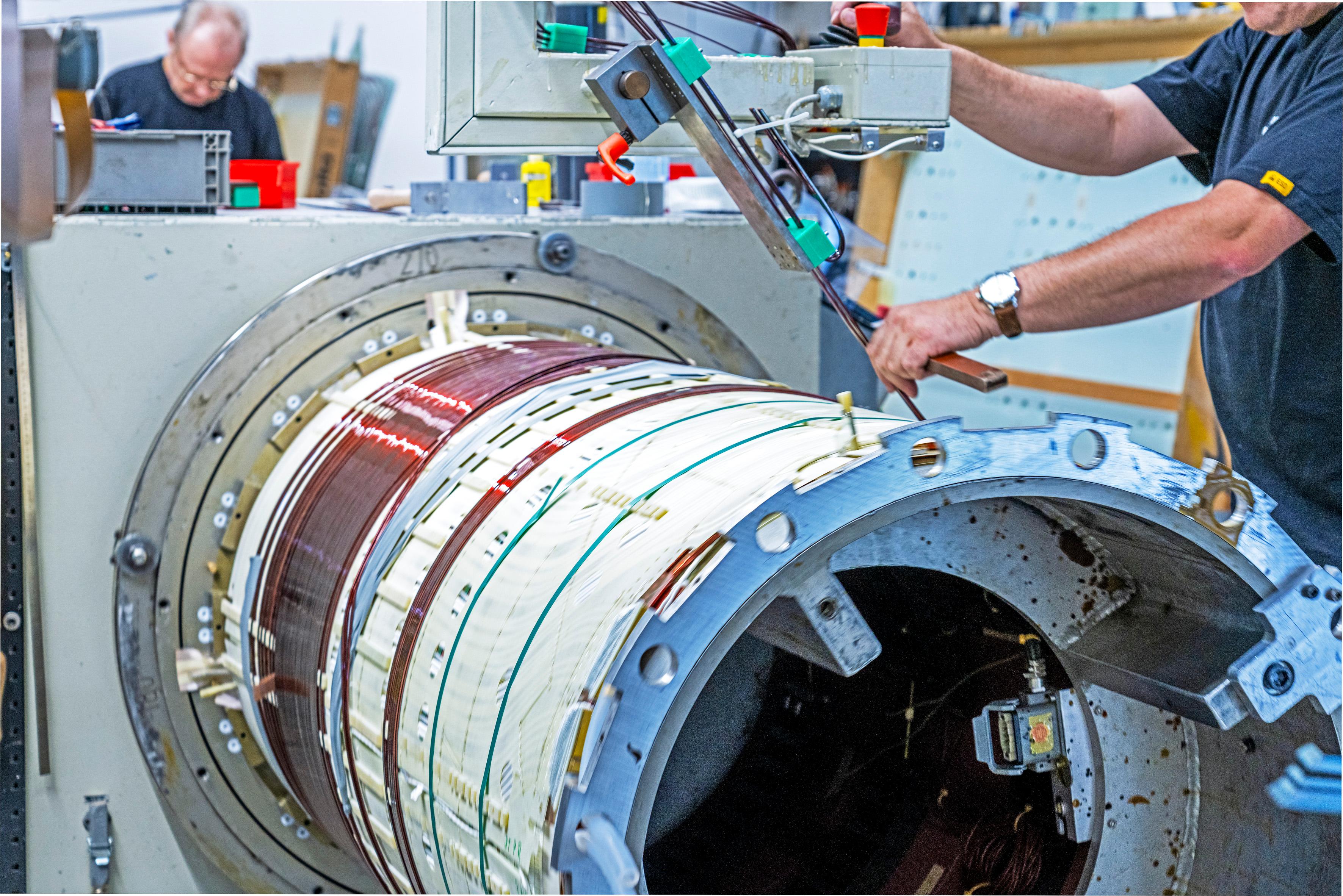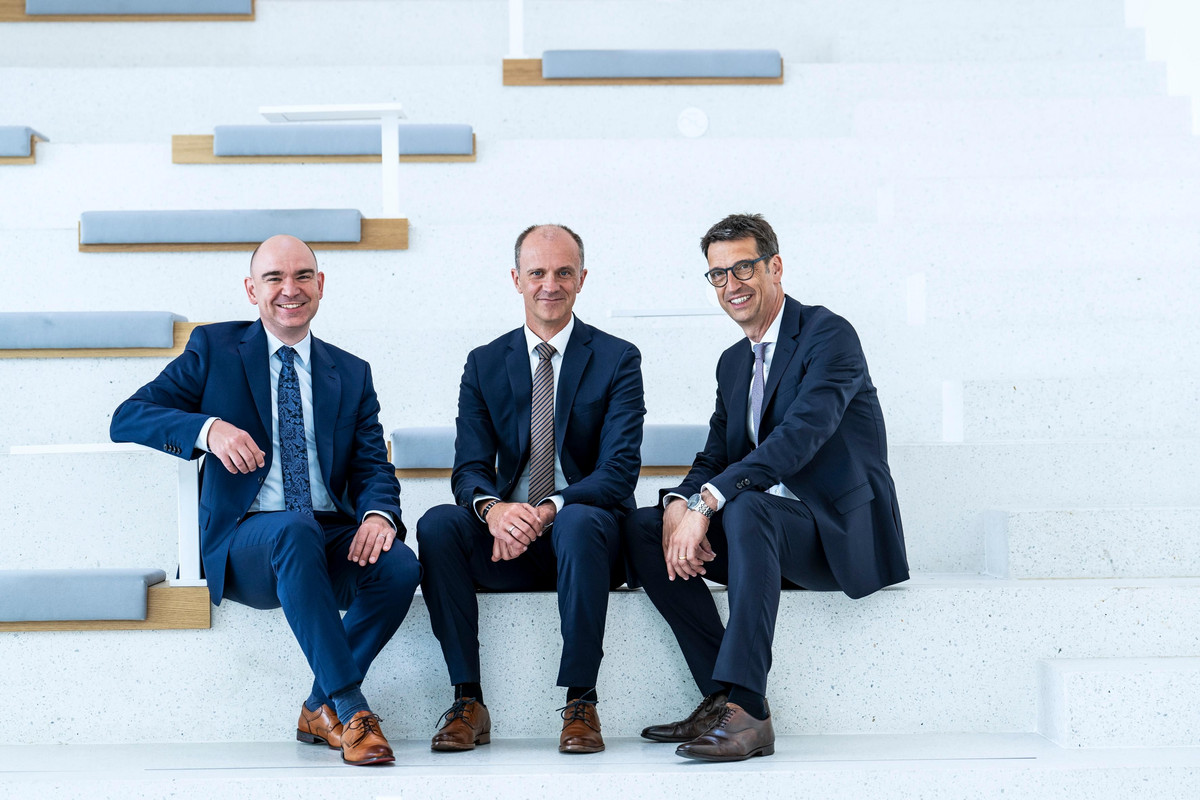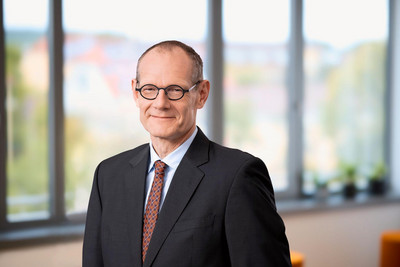Experts nominated for German Future Prize for development of novel MRI platform Magnetom free
“The fourth Future Prize nomination for Siemens Healthineers in just seven years underscores the innovative power of our company.” - Bernd Montag, CEO of Siemens Healthineers.
Two experts from Siemens Healthineers nominated for German Future Prize for development of novel low-field magnetic resonance imaging platform. Employees of Siemens Healthineers Dr. Stephan Biber and Dr. David Grodzki, together with Prof. Michael Uder, MD, Head of the Radiological Institute of Uniklinikum Erlangen, Germany, have been nominated for the German Future Prize for the development and clinical application of the novel MRI platform Magnetom Free.
- More than half of the world’s population does not have access to magnetic resonance imaging (MRI). The team developed the Magnetom Free. Platform which breaks down the barriers around the technology and improves its global accessibility.
- With Magnetom Free, MRI has been fundamentally rethought. The platform has a low field strength of 0.55 Tesla combined with AI-based image reconstruction for high diagnostic quality, as well as simplified infrastructure requirements due to drastically reduced helium demand of 0.7 liters.
- The platform makes it easy to install and operate MRI in places where this was not previously possible.
Employees of Siemens Healthineers Dr. Stephan Biber and Dr. David Grodzki, together with Prof. Michael Uder, MD, Director of the Radiological Institute of Uniklinikum Erlangen, Germany, have been nominated for the German Future Prize (“Deutscher Zukunftspreis”; Federal President’s Award for Technology and Innovation) for the development and clinical application of the novel MRI platform Magnetom Free.
Magnetom Free represents a paradigm shift in MRI, as the cost-effective and energy-efficient system platform greatly simplifies access to this imaging technology, which is crucial for the diagnosis of many diseases. A key element is the innovative magnetic cooling system that dramatically reduces helium requirements from up to 1,500 liters to 0.7 liters per system. Furthermore, Magnetom Free comes with a lower field strength of just 0.55 Tesla, and artificial intelligence for high-quality image reconstruction. The platform’s more compact size, larger bore, and ease of use also play an important role. “We are delighted to have been nominated for the German Future Prize,” said Bernd Montag, CEO of Siemens Healthineers. “Stephan Biber and David Grodzki, in close collaboration with Michael Uder, have developed a completely novel magnetic resonance imaging platform and brought it into clinical use. Magnetom Free.Max and Magnetom Free.Star pave the way for a new, simple type of MRI that can make an even greater contribution to the health of people worldwide by bringing the technology to places it couldn’t reach before. The fourth Future Prize nomination for Siemens Healthineers in just seven years underscores the innovative power of our company.”
More than half of the world’s population has no access to MRI. This is despite the fact that this radiation-free type of medical imaging can add great value to the diagnosis of a wide range of diseases—from the early detection and treatment of cancer to neurological disorders and orthopedic complaints. But the technology of conventional MRI systems also comes with certain hurdles. For example, the superconductive magnet must be permanently cooled with up to 1,500 liters of liquid helium. This can make transporting and operating the systems difficult because helium is not always readily available, depending on local infrastructure. Installing the large units, which typically weigh at least four tons, is not easy—they often have to be brought into buildings with the help of a crane and building alterations may also be necessary. In addition to these infrastructural challenges, qualified personnel are needed to operate the complex system and set the scanning parameters. For certain patient groups, such as children or obese and claustrophobic patients, an MRI exam also poses a challenge due to the confined space for the patient within conventional MRI systems.
Bringing MRI into the mainstream with innovation
Biber and Grodzki set out to develop an MRI system that overcame all these infrastructural and operational obstacles and could be used for routine clinical cases—such as head, spine, and joint imaging, or the diagnosis of liver tumors. To achieve this, the team left no core component untouched. The prerequisite for making the new MRI system lighter, more compact, and more cost efficient than previous devices was the reduction of the magnetic field strength to just 0.55 Tesla. However, this lower field strength is intrinsically accompanied by a reduction in the measurable signal. Here, the team took advantage of artificial intelligence (AI) to achieve sufficiently high image quality for accurate diagnoses. The AI-based image reconstruction algorithm Deep Resolve is trained on high-resolution MRI data and uses neural networks to generate high-quality images from a weaker input signal. This resolves the physical hurdle of low field strength.
Closed helium circuit for “dry magnet”
A new technology called DryCool was also developed for Magnetom Free for sustainable cooling of the superconducting magnet. This not only allows for the required amount of helium to be reduced to just 0.7 liters, but it can also be used in a closed circuit. As a result, the new systems no longer lose helium during transport or power outages, eliminating the need for service with liquid helium at the installation site. In addition, there is no longer a need to install a quench pipe, through which helium is discharged directly and safely from the building into the atmosphere in the event of an emergency shutdown. Due to the reduced system specifications, the energy consumption of the Magnetom Free. Platform can also be reduced compared to conventional MRI systems.
At less than two meters high and weighing around three tons, Magnetom Free systems can be brought through the door to their destination and installed there—without the need for extensive construction work. For the first time, the reduced specifications of the system allow for an increased patient bore of 80 centimeters, which is available with the Magnetom Free.Max model. This benefits claustrophobic and obese patients as well as children.
The operation of the scanner has also been simplified to enable even inexperienced users to perform MRI examinations safely and with high-quality results. In this way, the steadily increasing shortage of well-trained system operators can be counteracted.
Technologies with a promising future from Erlangen
All these innovations combined are creating a new class of scanners that is opening up MRI diagnostics to new patient populations worldwide. Two years after their launch, Magnetom Free.Star and Magnetom Free.Max are available in many countries around the world, including Brazil, India, and Angola. Yemen even saw the installation of its first modern MRI in over a decade. Access to MRI diagnostics could also be improved in countries such as Germany. Here, in the Pediatric Radiology Department of Uniklinikum Erlangen, Magnetom Free.Max could be installed in a room close to the intensive care unit so that young patients can be examined more easily. It is also conceivable that, in the future, MRI units might be installed directly in the intensive care unit, in order to save patient transport and waiting times.
Technologies developed specifically for the Magnetom Free. Platform, such as AI-based image reconstruction, have already been made available for other, “larger” MRI systems that are also being used in clinical routine and research. In the medium term, the “dry magnet” technology will also play an important role for other model series developed and manufactured in Erlangen, Germany.
Together with their teams, the three nominees have helped make sure that Magnetom Free was brought to market and became established in everyday clinical practice. Stephan Biber, in his role as system architect, was responsible for driving the trend-setting hardware innovations and bringing them together into an overall system. David Grodzki’s task was the application development and the elaboration of the system specification as well as its implementation as a clinically high-quality imaging system. Michael Uder conducted the first clinical evaluations of the Magnetom Free.Max system during development and he continued this work at Uniklinikum Erlangen, the world’s first clinical installation. Together with his department, he was responsible for clinical testing and the integration of Magnetom Free.Max into clinical routine.
The Federal President’s Award for Technology and Innovation is one of Germany’s most prestigious awards in this space and will be presented to one of three nominated teams by Frank-Walter Steinmeier in Berlin on November 22.

Nominated for the German Future Prize 2023: Dr. David Grodzki, Dr. Stephan Biber, Prof. Michael Uder, MD. © Deutscher Zukunftspreis /Ansgar Pudenz - Siemens Healthineers

Dr. Stephan Biber and Dr. David Grodzki, together with Prof. Michael Uder, MD, Head of the Radiological Institute of Uniklinikum Erlangen, Germany, were nominated as one of three teams. More than half of the world’s population does not have access to magnetic resonance imaging (MRI). The team developed the Magnetom Free. Platform which breaks down. © Deutscher Zukunftspreis /Ansgar Pudenz - Siemens Healthineers



